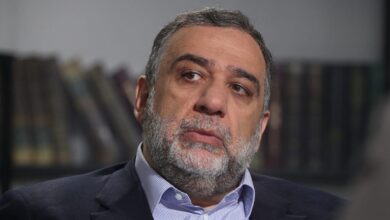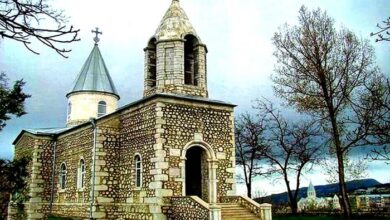100 years ago Syrians took in Armenians; now, Armenia is a refuge for Syrian families

Elizabeth MacBride
Forbes
One month ago, one more Syrian restaurant opened, this one in Yerevan, Armenia.
“I love Armenia. It’s my job, I think, to love it. I want to live here. I don’t to go anywhere else,” said Shaghig Rastkelenian. She fled to Armenia about four years ago from Aleppo with her family. Her two sisters, and mother are working in the restaurant, which seats 35-40 and is called Zeituna.
“My mom is professional cook. She cooks Arabic food and Syrian food, and everybody knows her,” said Rastkelenian. “We decided to go ahead, to make money, because nobody can live in a place without working.”
As the Syrian refugee diaspora spreads across the world, one of the first signs of their integration into the communities where they land is turning out to be restaurants.
Syrians are known throughout the Middle East for their craft skills, which include cooking.
Syrian restaurants opening on Medina Street were an early effect of the refugee crisis in Amman. I’ve heard of a catering kitchen in Cairo, called Zeit Zeitoun, being run by Syrian refugee women, set up with the aid of the Syrian diaspora in Cairo. One of the first stories I wrote about refugees in the Middle East almost two years ago was about a Syrian woman who was supporting her family by making the savory pastry kibbeh. There’s an upcoming discussion of the culinary as part of the Syrian identity.
Stories of Syrian refugees rebuilding their lives in Armenia resonate because of the history of the connection between Syria and Armenia.
“I think for hard-working people they can find life where they want,” Rastkelenian said. “The only problem here is that you can do only small businesses. The economy is slow.”
She estimated that you can open a small restaurant in Yerevan for about $10,000.
Stories about the Syrian refugees in Armenia have particular resonance because of the history of connection between the two countries. One hundred years ago, during the Armenian genocide, Syria became a refuge for families that survived forced marches and mass violence in the desert between the two countries. Now that the tables are turned, Armenia is welcoming Syrian refugees: a population of about 17,000 has reportedly come to the country of about 3 million.
Before the genocide, Aleppo had had an Armenia community dating to the Silk Road that led from China to Venice and passed through both Syria and Armenia, according to lawyer Harout Ekmanian, a Syrian who worked for a few months in Armenia in 2012 before moving to New York. When the genocide happened, the Armenians living in Aleppo led the humanitarian effort, and as a result, grew an even stronger community in the city, one that lasted and sustained its culture until now. Rastkelenian grew up speaking Armenian and attended an Armenian school.
“They call Aleppo as the mother community of the whole Armenian diaspora,” he said.
Despite Armenia’s high poverty rate — 30% — and its fairly slow growth, Syrian refugees by all accounts are finding a welcome in Armenia. Though they aren’t able to continue in their same lines of work or businesses — a shopkeeper in Aleppo might find a market stand in Yerevan — they are finding community and support. For instance, Rastkelenian said, Syrian Armenian students attend school for free. (She finished college in Armenia).
Rastkelenian, 24, who also works as a model, has also set up an Instagram and Facebook campaign with two friends called LiveLoveArmenia, which sells bracelets emblazoned with the motto for about $4. Their first project, she said, was hiring a Syrian-Armenian family to knit scarves and hats, which they donated to a orphans in Yerevan.








